Dealing with clutter is a constant battle for many of us. Clutter can creep up on us, it drains us mentally even if we’re not directly thinking about the clutter, and it wastes our time and money. A binge decluttering session won’t be enough to keep clutter at bay forever; we’ve got to change our mental habits. Here are ten new ways of looking at clutter.
Photo by GlebStock (Shutterstock).
10. Pretend You’re Moving Soon
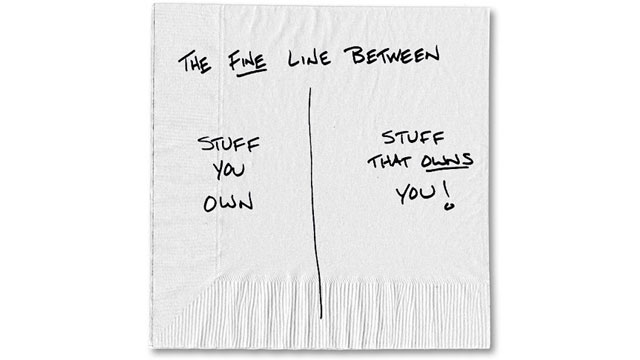
The thought of moving can be painful, in large part because we have too much stuff. Pretend you’re going to move, though, and it will be easier to identify the stuff you just don’t need and should get rid of. If it’s not worth the effort of packing up to bring along to a new place, it’s not worth keeping in your current one. Reality check: You probably don’t need most things you own.
9. Make a Plan
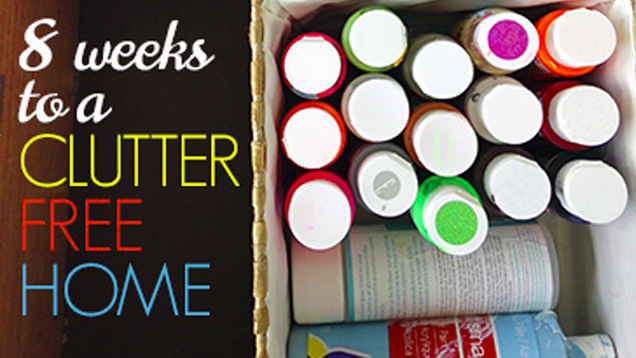
Clutter is hard to get rid of when there’s just so much of it or bits of clutter in every room. When it’s overwhelming like that, we’re more likely to put off decluttering. However, just by having a plan with small steps you can do each day, such as this eight-week guide, you can stay motivated and trick yourself into thinking this is doable. If you’ve got a messy office, here’s a plan to get it organised.
8. Get Rid of One Thing Every Day
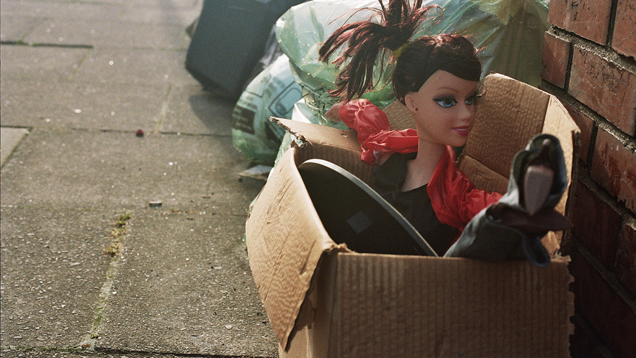
Speaking of baby steps, it might be easier for you to declutter if you only have to get rid of one thing at a time. Do this every day until you reach your downsizing goal. You could do five things at a time or ten if you like. Either way, it could become a game that’s easy to win. Start with this list of eight things you can discard now.
7. Don’t Buy Things If You Wouldn’t Pay Full Price for Them

When I posted this tip, some of the commenters took it to mean not looking for sales. That wasn’t really the point; it’s more about programming our minds to stop buying crap we don’t really need. “If you wouldn’t buy it at full price, you probably don’t need it,” is just a way of saying: don’t buy things just because they’re on sale. Great deals are great — but only if you truly need or could use the item. Otherwise, sale items just take up space in our homes and become clutter. For things you already own, a similar rule of thumb applies: If you wouldn’t buy it today, sell it.
6. Remember: “Don’t Put It Down, Put It Away”
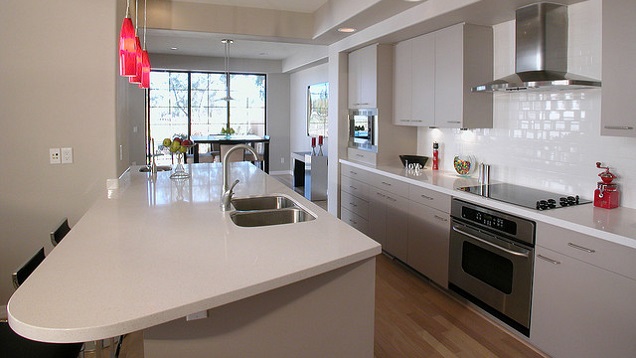
Another mantra to keep in mind, this one reminds us that not all flat surfaces are the right spot for your stuff. When things aren’t where they belong, they become clutter. So as soon as you’re about to put something down, ask yourself if that’s where it belongs. And also remember to “complete the cycle” for any cleaning method by following through on the most important step: putting things away. It helps if your collections have a purpose and your rooms have distinct purposes as well.
5. Just Give Up Hope
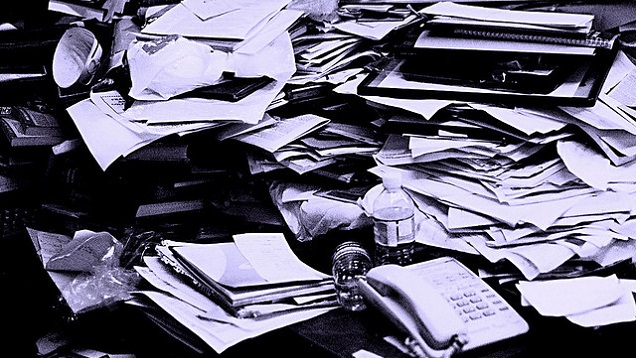
We don’t mean you should give up hope that you can clear up your clutter, we mean stop holding on to things you hope you’ll use one day (but deep down inside know you probably won’t). Those “just in case” things are usually the biggest sources of clutter. “One day I might need this [insert thing that’s still in the moving box in your garage from ten years ago]” should be a red flag that the object is just taking up space.
4. Thank Your Items for Their Service (Then Give Them Away)
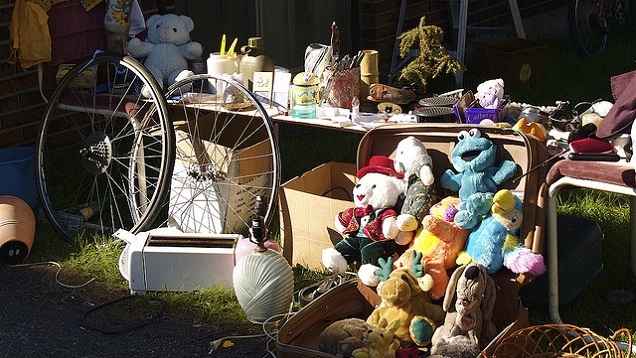
Marie Kondo, the author of The Life-Changing Magic of Tidying Up, offers this strange but effective tactic: Say goodbye and thank you to items that you need to let go of. Sometimes sentimentality is the root of a lot of clutter, so think utility first and ditch the guilt. Thank your old coat for keeping you warm, your kids’ stuffed animals they no longer play with for bringing them joy, and your collection of duplicate computer cables for connecting your stuff once upon a time. Then you can move on. It might also help to think “this isn’t my stuff” when you’re decluttering.
3. Declutter with the Right Questions
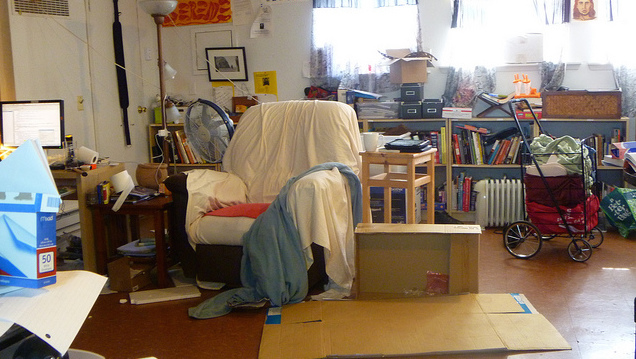
Another Kondo tip: for each item in your possession, ask “Does this item spark joy?” If it’s not useful, beautiful, or joy-making, it’s probably time to find a new home for it. Here’s a checklist for your clutter identification needs.
2. Commit to the “One In, Two Out” Rule
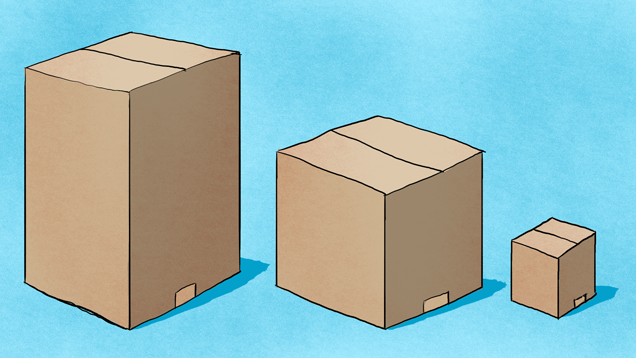
The rule: Whenever you bring in a new item, you have to find a new home for two other items. With this rule, you’re decluttering and likely upgrading at the same time. Win!
1. Focus on Your Clutter Hotspots
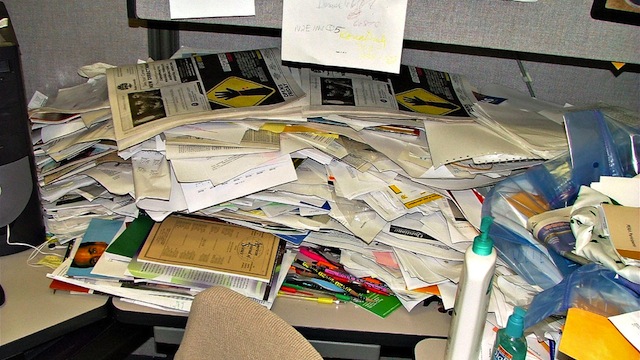
Even if you can’t get rid of all the clutter in your home, if you focus on the one or two areas that tend to attract clutter the most (for me, that’s my entryway table and my piano and, well, my desk), you’ll be ahead of the game. The broken window theory, which says that just one broken window can lead to vandalism, applies to clutter too: just one piece of junk mail on the table or towel on the floor could soon become piles of clutter. Focus on the worst areas first before the clutter spreads. (Simple tricks I’ve used are keeping the piano cover open so I can’t dump the day’s mail there and adding a shredder in the entryway to prevent unnecessary papers from getting into my house in the first place.)
Who knows? Maybe keeping those areas clean for a while will inspire you to keep clutter away in the rest of your place for good. The Flylady is a great resource for living clutter-free once and for all.
Lifehacker’s Weekend Roundup gathers our best guides, explainers, and other posts on a certain subject so you can tackle big projects with ease. For more, check out our Weekend Roundup and Top 10 tags.

Comments